My legs felt the burn before the battery did. A fork in the road lay in front of me, the route to my right leading to a familiar path that would put me back in my driveway in about 20 minutes. To my left, uncharted territory. The gravel path northwest of Horse Mountain, just outside Palisade, Colorado, where I live, traverses across a vast swath of barren, high-desert BLM land south of town in a series of jagged loops. Because many of the trails are simply worn tracks from years of automotive off-road use, no map or GPS app has definitively routed this area. But my best guess puts the total trail mileage at over 100. Some of this is choppy 4×4 road, but much of it is coarse dirt and gravel that made for a smooth sailing e-bike ride on my new Himiway Zebra. Despite the burn in my thighs, I headed left.
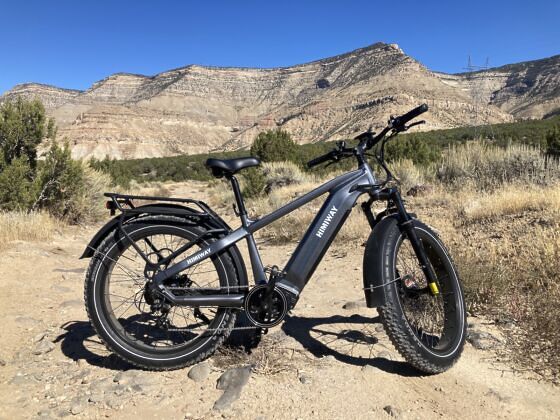

This Long-Range E-Bike Is an Ideal Ride for Commuters and Adventurers, and It's $50 Off
The Zebra, a new offering from the Kansas City-based e-bike manufacturer, caught my attention because it promised everything a traditional – dare I say, “hipster” – e-bike does not. Fat tires capable of traversing the varied terrain of Colorado’s Western Slope. A Class 3 throttle that propels the bike towards 28 miles per hour even without pedal assist. And, most notable, a purported 80-mile range per charge.
This 80-mile range was the impetus for my jaunt across the greater Palisade area. I wished to put the bike to the test, to see how far it could go before range anxiety set it. The night before the ride, I charged the bike in my garage, which took about seven hours. I warmed up by cruising a segment of the Fruit and Wine Byway, a road route that covers the bulk of the area’s wine country and peach orchards. Then, just past Bookcliff Vineyards near the base of Grand Mesa, the road switched to gravel and shortly thereafter passed through BLM gates onto public land.
If this bike was to hold up in Colorado, it needed to pass this test.
We hope you love the Himiway Zebra! Just so you know, Matador may collect a small commission from the links on this page if you decide to make a purchase.
Testing the Himiway Zebra on road and gravel

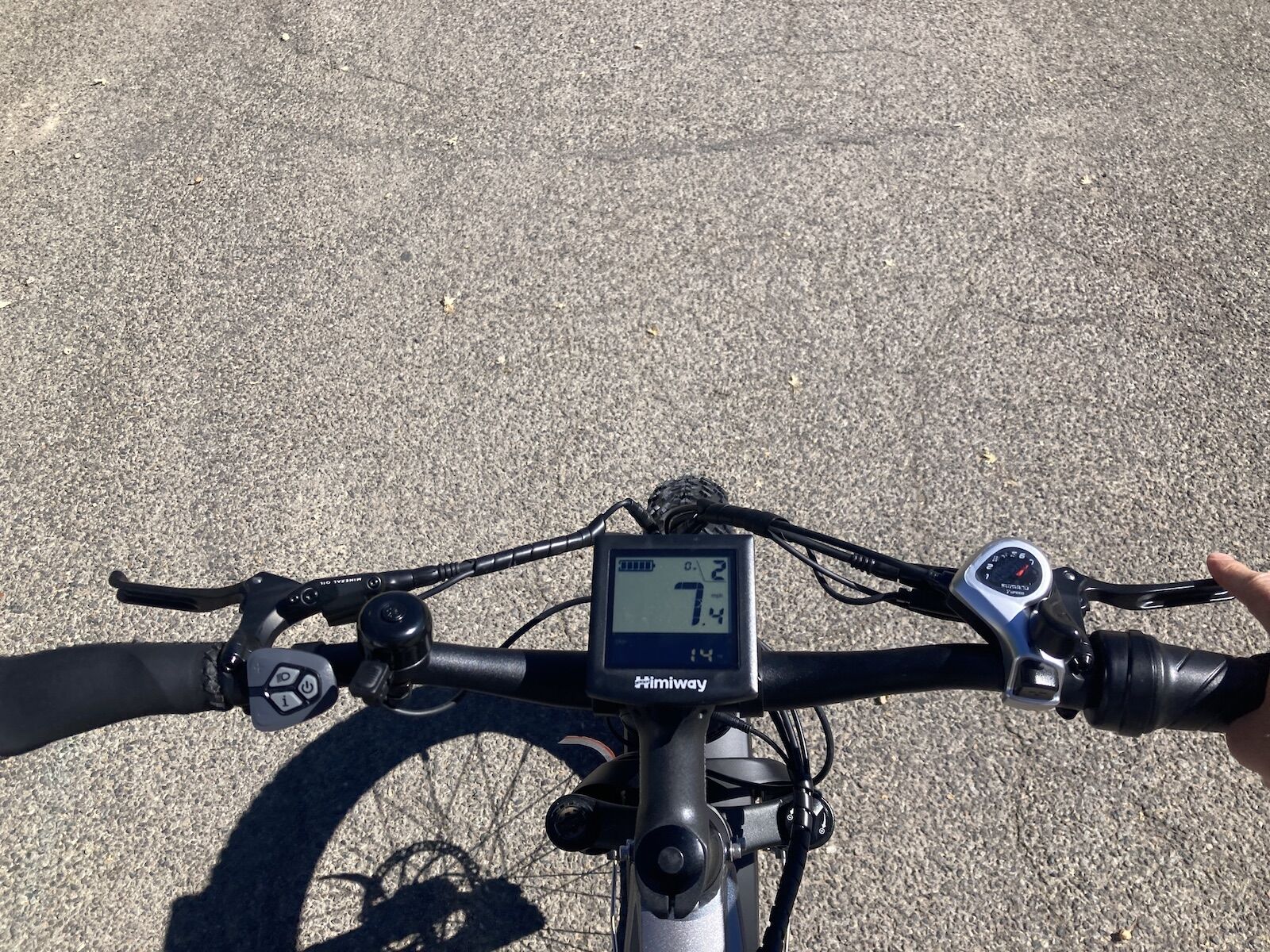
As an experienced e-biker, I felt confident – perhaps too confident – cruising the Zebra along the Byway. Traffic is light in the area, and at 20+ MPH on a large and noticeable bike, I cruised in the middle of the lane when no cars were present. This is a plus, as the bike certainly alleviates any need for “Napoleon Syndrome” on streets without a dedicated bike lane. That said, the bike is heavy — plan your assembly and any car-bound transport so that you only have to do it once, if at all.
10 miles in, I hit gravel. I immediately felt a difference in the ride. The bike’s hardtail allows the battery to firmly guide the ride on dirt, which I appreciated as it took minimal effort to steer around rocks and to keep momentum up over undulating hills.
The bike’s center balance is the best I’ve found on any e-bike. The easiest way to notice this is to remove your hands from the handlebars (look mom!) and pedal straight forward. You’ll hardly sway at all. In more practical terms, this strong balance makes climbing and descending hills easier than if the front fork swayed more easily. It’s also far safer this way.
Another 10 miles in, I stopped to take photos at the crest of a hill. The bike and battery were holding up nicely – the display noted just under a full charge. I tend to cruise on level 2 or 3 power, not harnessing full battery juice in favor of getting some exercise while still smoothing out steep pitches and full stops. I barely felt those first 10 miles, and still felt strong 10 additional miles later. Since hitting gravel there had been several points where I could have mistaken the ride for a dirt bike as I near-effortlessly pedaled up inclines and averted the occasional pothole.
The bike’s 26-inch fat tires are burlier than those found on most mountain bikes and indeed, most mopeds. They’re more than capable of going off-road, as I tested on my first ride. I learned not to become overconfident, however, as the bike doesn’t have much in the way of travel suspension in comparison to a mountain bike. When riding on unpaved paths or roads, it’s best to keep the battery assist at Level 1 or 2 and put a bit more effort into pedaling, so as not to go to hard on the frame, brakes, and suspension.
A few miles later, I passed the furthest point I’d ever ridden in this particular area. I stopped again to take stock of the situation. The saddle was noticeably more comfortable than other e-bikes I’d ridden, causing no soreness or tension. The brakes had been exceptionally responsive, never causing anxiety as a stop sign or passerby approached. I’ve spent a lot of time on a Lectric XP 3.0, and while the torque on the Himiway Zebra is noticeably less prompt when accelerating from a stop, I found that comforting once I got used to it. A slightly – very slightly – slower acceleration allowed time to fully transition from stopping to moving at a red light or when first departing from a location.
Testing the limits of the Himiway Zebra’s 80-mile range
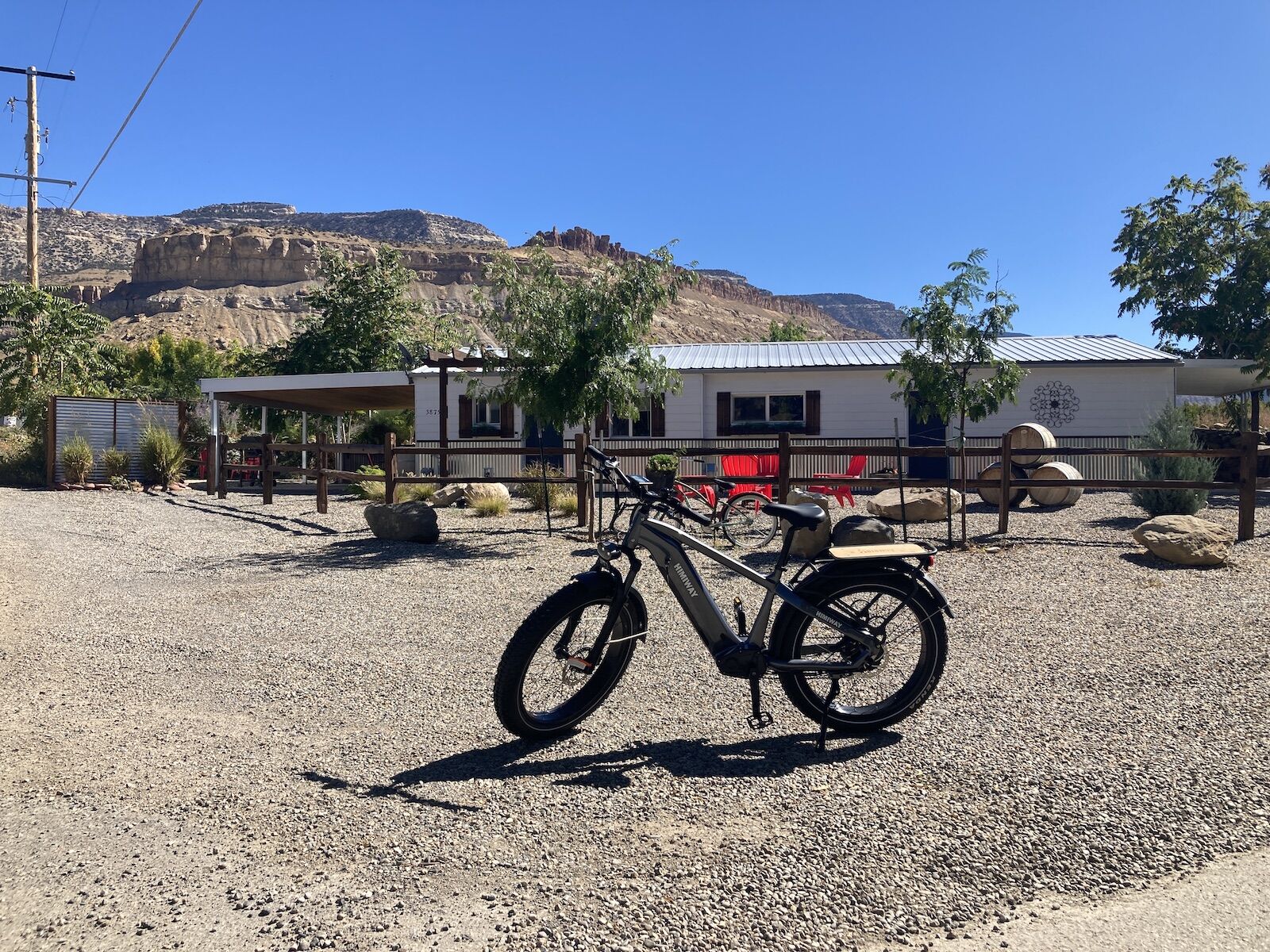

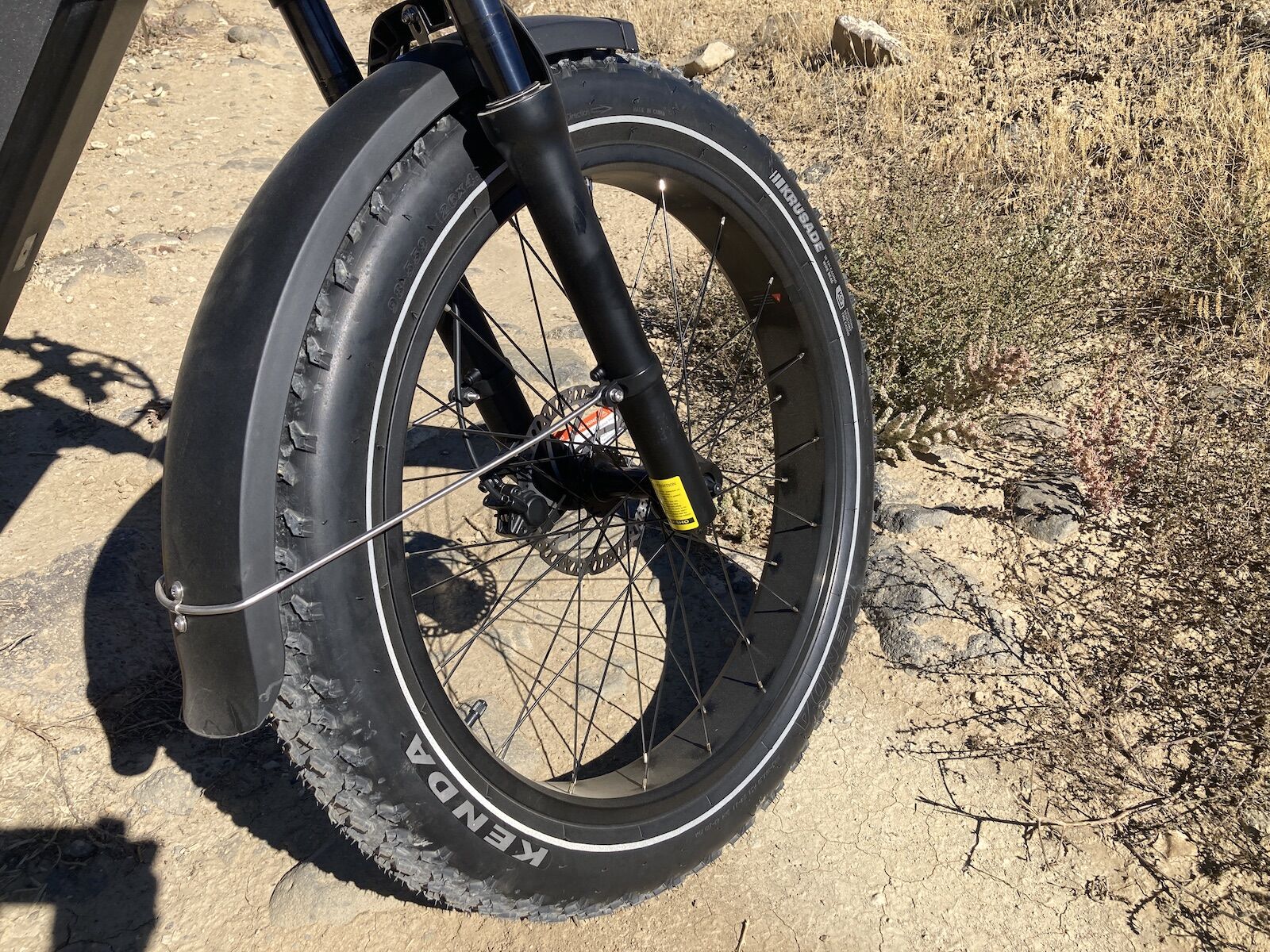
I’d allotted a full afternoon for this ride because I wanted to push the bike as far as I could without fear of losing juice before reaching home. At the 30-mile mark, I still felt confident about the range as the display showed a little over half a charge remaining. A series of small hills lay ahead of me then, and I floored it up them at full power. First one, then a second, and finally a third, before which I pushed through a shallow stream of water cutting its way toward the Colorado River a few miles ahead. A quick splash of mud didn’t hinder the ride at all.
The hills set the power back a bit, and as I approached the fork that led back towards paths I’d ridden before, I considered heading home. But the burning desire for adventure (or, an itch for calculated risk) overcame that thought. The route to the left led toward the furthest reaches of East Orchard Mesa, a winery- and orchard-lined hill above Palisade, and would require eight miles of road riding to get home. Do or die.
Himiway clearly had varying terrain in mind when designing this bike. After leaving the fork I hit a flat patch of smooth dirt and took the opportunity to reduce the battery power and put some extra legwork in, despite my growing fatigue. The views of the Grand Mesa behind me and Mt. Garfield to the right supplied any extra inspiration I needed to keep pedaling. The odometer topped 30 miles just before I hit pavement.
Cruising the final stretch toward home, I was elated that the Himiway Zebra had surpassed any doubts I’d drummed up about its range or its performance ability. This is a bike that can be depended on for nearly any routine need, from commuting to hauling to a bit of light adventuring, as I’d found out. I wouldn’t be comfortable pushing it much further than I had on this ride, but given that the vast majority of e-bikes would have crapped out 20 miles earlier (or more), the Zebra stood up to the test. As the sun began to set over Colorado National Monument due west, I flipped on the headlight (an easy button adjacent to the display) and reveled in what had been one hell of a ride. I made it home, no problem.
Total miles on the charge topped 40, and that includes cruising up and over numerous small hills with battery power juicing the uphill climb. The battery was about 85% empty as I pulled into my driveway. This is a smashing success — given the heavy throttle use and elevation gain, not to mention the varying terrain, getting over 50 miles on this charge is quite the accomplishment.
Where a next-generation Zebra could improve
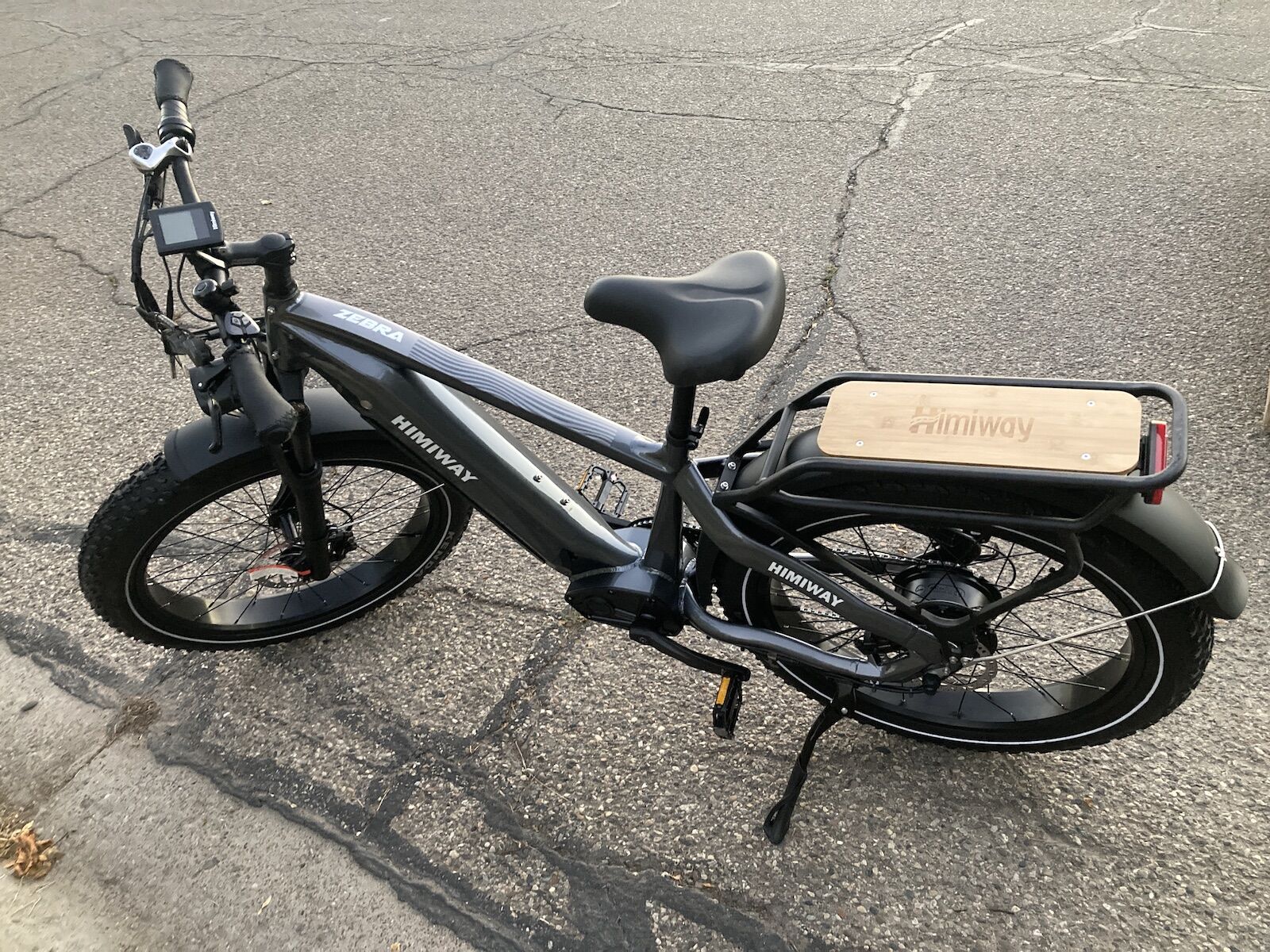
Photo: Tim Wenger
My only complaint about the Himiway Zebra is that while its big-bodied looks beckon for rugged adventure, its hard-tail build limits its capability for gravel riding. If the Zebra were a dually – meaning “dual suspension,” like you’d find on most modern mountain bikes – this thing could give many gas-powered dirt bikes a run for their money.
Alas, that’s not what the brand was going for – but it did craft a durable e-bike that is big enough to make the rider feel comfortable commuting, burly enough to tow a trailer, and has fat tires that make the bike rideable year-round even in locations that experience winter.
This first ride on the Zebra reminded me of cruising Southeast Asia on a two-stroke moto.
Himiway Zebra specs
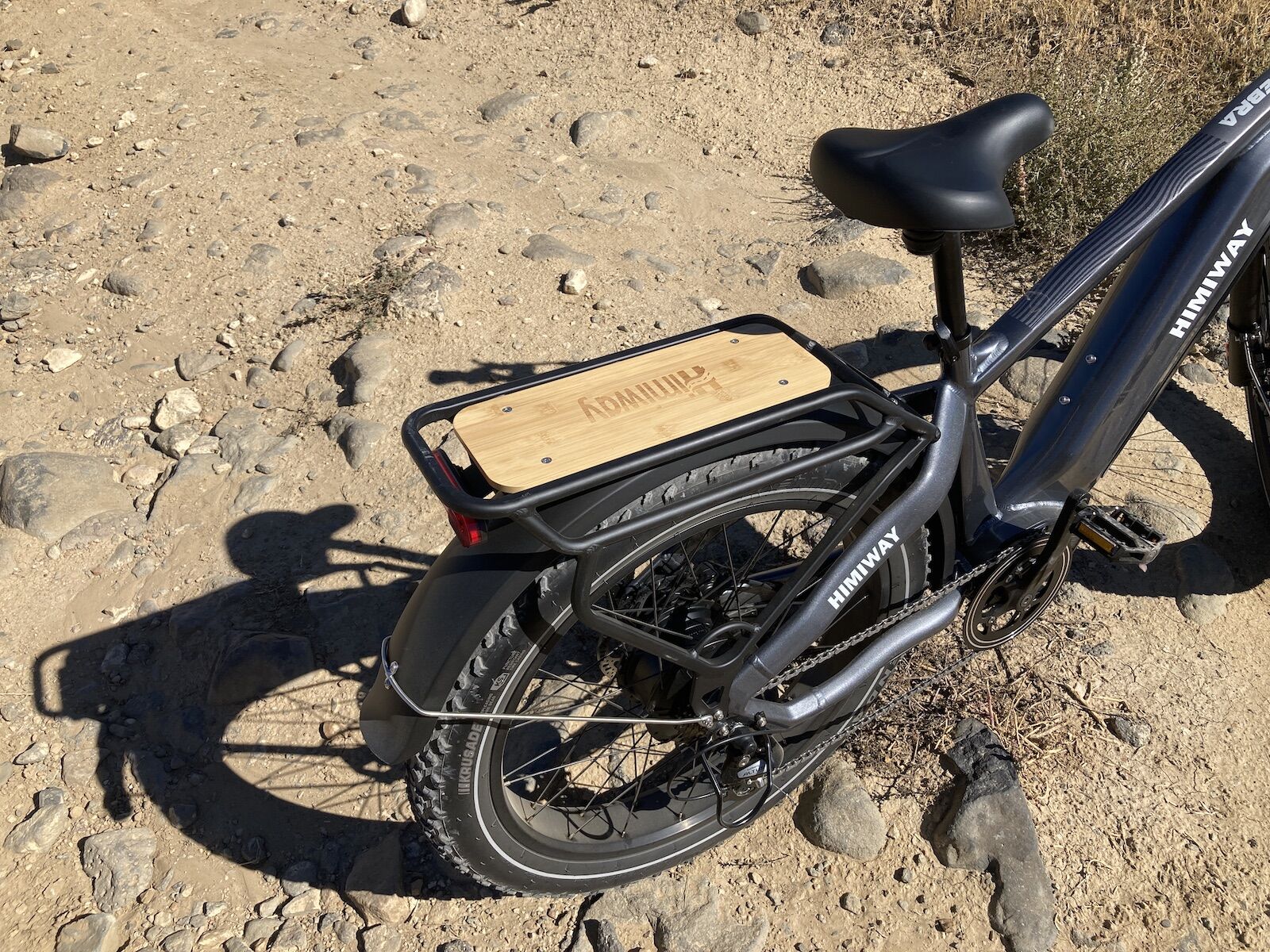
Photo: Tim Wenger
The Himiway Zebra is an electric fat bike that is designed for all-terrain use. It has a powerful 750W motor, a long-range 960Wh battery, and a sturdy aluminum frame that can handle up to 400 pounds of weight. The Zebra is also equipped with hydraulic disc brakes and 26-inch Kenda fat tires that provide excellent traction in a variety of conditions.
Here are the full specs of the Himiway Zebra:
- Motor: 750W brushless gear hub motor
- Battery: 48V 20Ah Samsung/LG lithium-ion battery
- Range: 60-80 miles (pedal assist) or 40-50 miles (throttle only)
- Top speed: 25 mph (pedal assist) or 20 mph (throttle only)
- Payload capacity: 400 pounds
- Frame: Aluminum alloy
- Brakes: Hydraulic disc brakes
- Tires: 26-inch Kenda fat tires
- Weight: 79 pounds
- Dimensions: 70 inches x 40 inches x 30 inches
- Additional features:
- LCD display with USB charging port
- Intelligent pedal assist with 5 levels
- Removable battery
- Integrated rear light